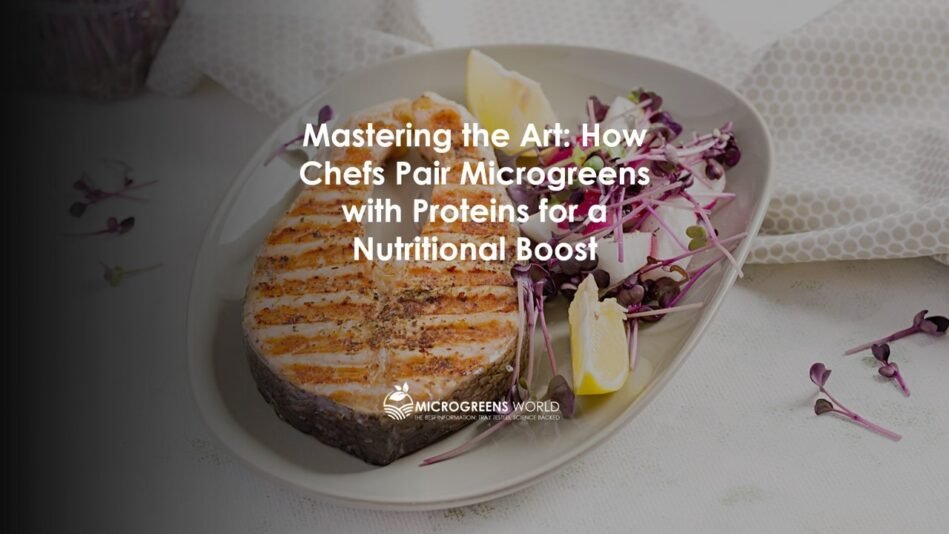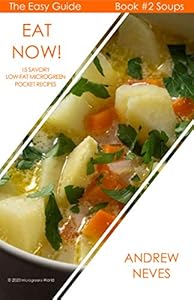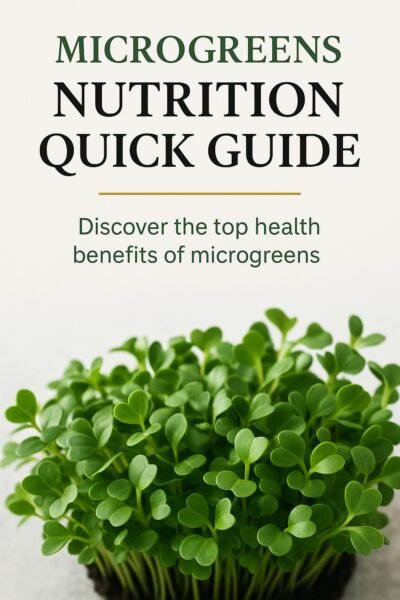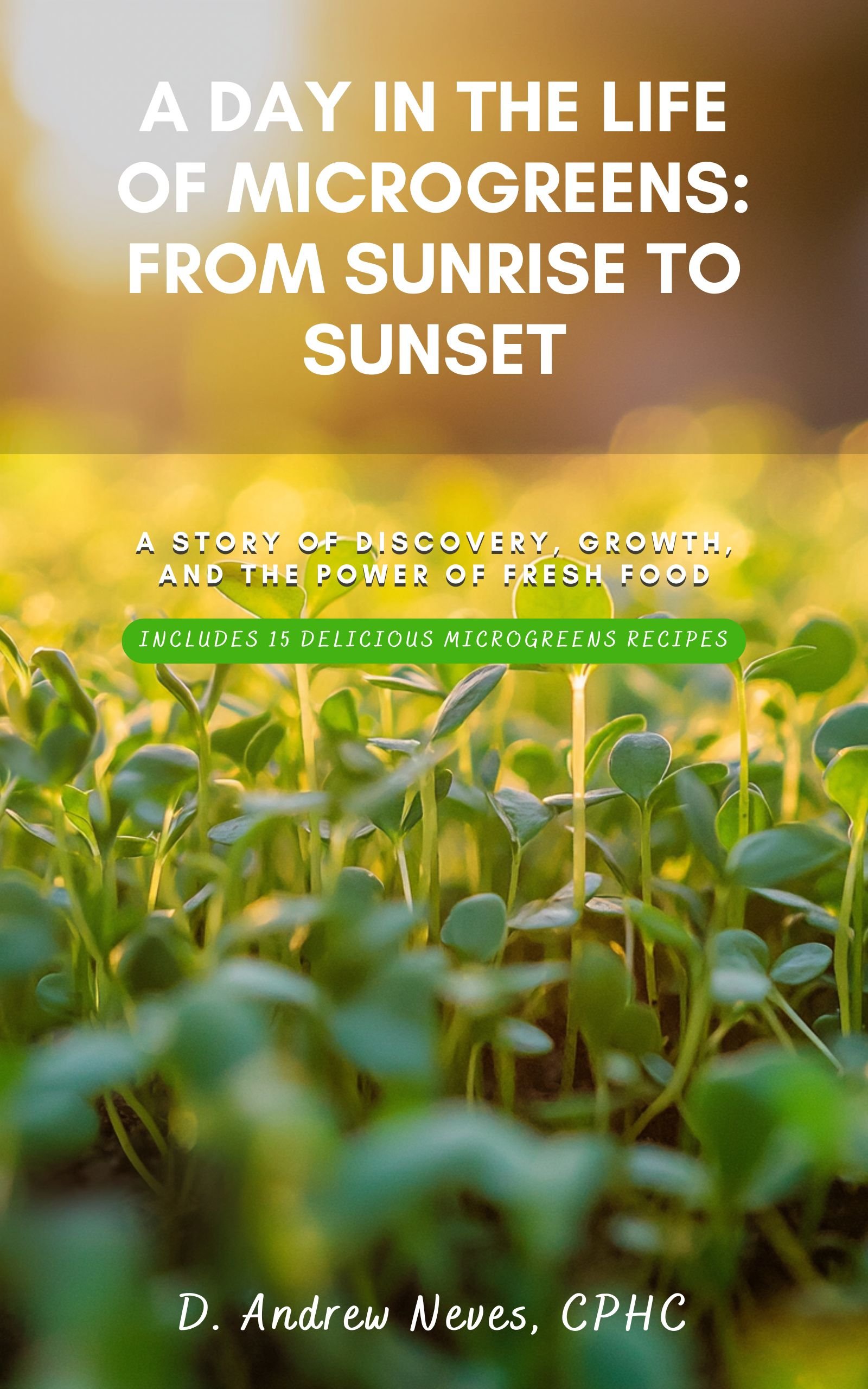In the culinary world, pairing food is a skill that can elevate a dish from ordinary to extraordinary. One such pairing that has been gaining popularity among chefs and food enthusiasts alike is the combination of microgreens with proteins. This pairing not only enhances the flavor profile of a dish but also boosts its nutritional value.
Chefs pair microgreens with proteins to enhance their dishes’ flavor, visual appeal, and nutritional value. The small seedlings of vegetables and herbs known as microgreens are incredibly nutrient-dense. When paired with proteins like meat, fish, or plant-based proteins, they add a fresh, intense flavor and a vibrant color contrast. The pairing also balances the diet, providing a mix of essential nutrients needed for health and well-being.
Interested in learning more about this culinary art? Read on as we delve deeper into the world of microgreens and proteins, providing you with practical tips and insights to create your own culinary masterpieces.
In this post, we will delve into the art of pairing microgreens with proteins, exploring why it’s essential, and how you can master this skill in your own kitchen.
Key Takeaways
- Flavor Enhancement: Chefs use microgreens to add fresh, intense flavors that complement various proteins, enhancing the overall taste of dishes.
- Visual Appeal: The vibrant colors and delicate textures of microgreens provide an attractive contrast, elevating the presentation of meals.
- Nutritional Boost: Microgreens are nutrient-dense, offering high levels of vitamins, minerals, and antioxidants, which, when paired with proteins, contribute to a balanced and healthful diet.
- Versatility in Pairing: Different microgreens can be matched with specific proteins—such as radish microgreens with steak or beet microgreens with salmon—to create harmonious flavor profiles.
- Culinary Creativity: Incorporating microgreens allows chefs to experiment with unique combinations, adding depth and complexity to traditional protein-based dishes.
MICROGREENS WEEKLY DIGEST
Unearth nature’s nutrient powerhouses.
Expert tips. Creative recipes. The Latest science.
Join the community. Cultivate your knowledge. Nourish your body.
Sign up now. Let’s grow together.
Selecting Proteins and Microgreens
Young vegetable greens, called microgreens, are only a few inches tall. They come in various hues and textures, have a fragrant flavor, and contain concentrated nutrients. Microgreens straddle the line between a sprout and a baby green are regarded as young plants. They are harvested just after the first “true” leaves have developed.
Microgreens have been gaining popularity recently due to their high nutrient content. They contain high levels of polyphenols, an antioxidant linked with a lower risk of cardiovascular disease, cancer, and Alzheimer’s. Microgreens are a low-cost option to improve your diet because they are a fantastic source of healthy plant chemicals like antioxidants and are simple to produce at home.
Conversely, proteins are essential macronutrients in building and repairing tissues, making enzymes, and supporting immune function. They are found in various foods, including meat, fish, dairy products, and plant-based sources like legumes and nuts. Pairing proteins with microgreens provides a balanced diet, creates flavorful, colorful dishes, and is rich in essential nutrients.

Microgreens with Proteins Pairings
Pairing Microgreens with Animal Proteins
Animal proteins and microgreens are frequently combined by chefs to produce dishes that are not only delicious but also aesthetically pleasing. For instance, a simple grilled steak can be transformed into a gourmet dish by topping it with a handful of radish microgreens, which add a peppery flavor and a vibrant pop of color. Similarly, a pan-seared salmon can be elevated by pairing it with beet microgreens, adding a sweet, earthy flavor and a beautiful red hue.
Poultry, like chicken and turkey, can also benefit from adding microgreens. For instance, chicken breast topped with a mixture of microgreens, lemon zest, and garlic provides a fresh flavor that complements the meat perfectly.
Pairing Microgreens with Plant-Based Proteins
Microgreens can be paired with plant-based proteins for those following a vegetarian or vegan diet to create nutritious and flavorful meals. For instance, a quinoa salad can be enhanced with a mix of microgreens like broccoli, kale, and radish, providing a variety of flavors ranging from mild and sweet to peppery and tangy.
Tofu, a versatile plant-based protein, can also be paired with microgreens. A tofu scramble, for instance, can be made more colorful and nutritious by adding a handful of sunflower microgreens, which have a nutty flavor and a crunchy texture.
Legumes, another excellent source of plant-based protein, also pair well with microgreens. A lentil salad topped with arugula microgreens, for instance, offers a peppery flavor that complements the earthiness of the lentils.
The Art of Pairing
The art of pairing microgreens with proteins lies in understanding the flavor profile of each microgreen and how it can complement or contrast the flavor of the protein. For instance, the mild, slightly sweet flavor of pea microgreens works well with the robust flavors of red meat, while the peppery flavor of radish microgreens can add a kick to milder proteins like chicken or tofu.
The texture of the microgreens also plays a role in pairing. Some microgreens, like sunflower and beet, have a crunchy texture that can add a pleasing contrast to soft or creamy proteins like fish or tofu. On the other hand, delicate microgreens like amaranth or fennel can add a subtle flavor and a touch of elegance to sophisticated dishes like steak tartare or seared scallops.
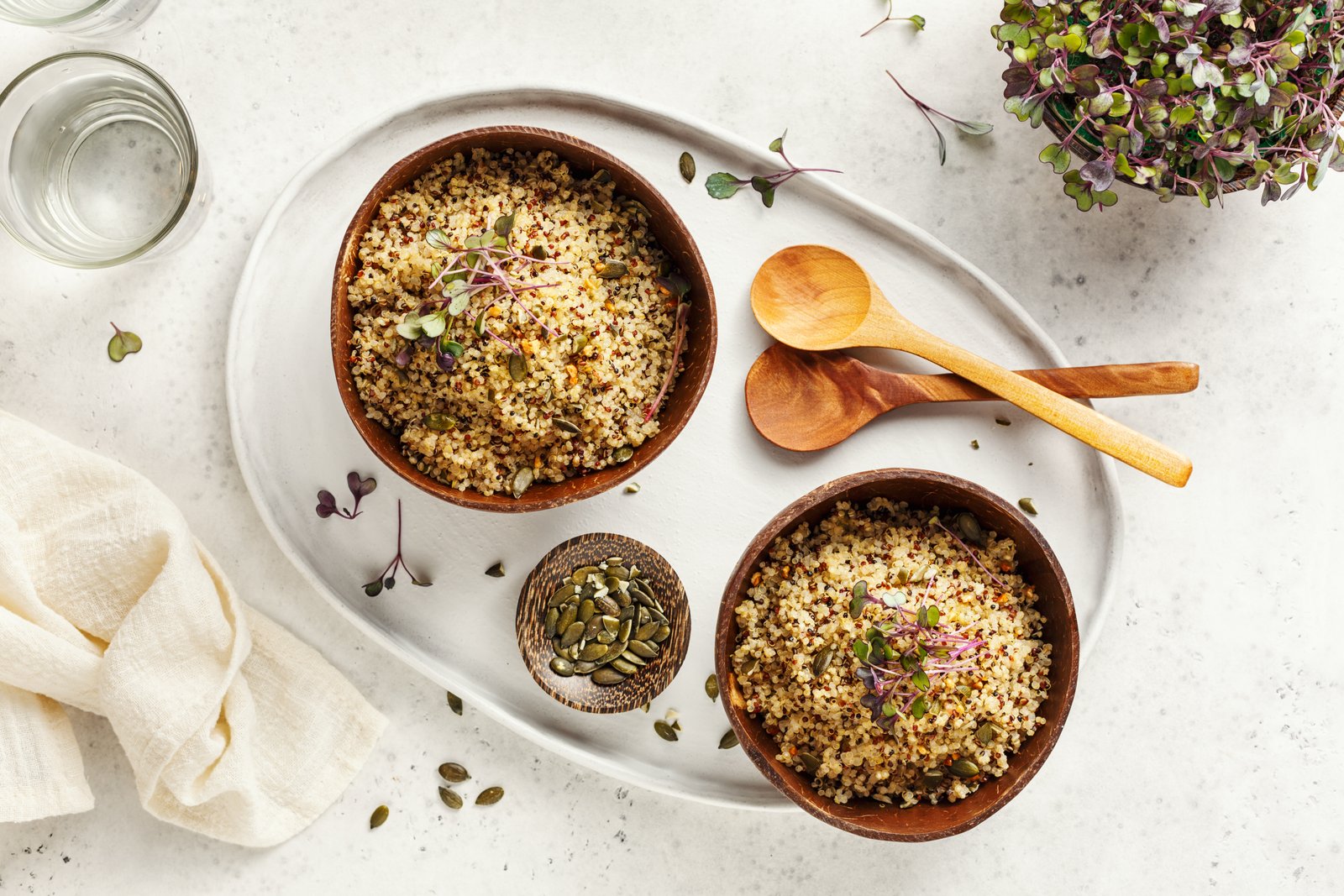
Microgreens Recipes: Protein Pairings
To apply this knowledge in your kitchen, start by choosing a protein and a microgreen you enjoy. Experiment with different combinations, considering each component’s flavor and texture. Here are a few simple ideas to get you started:
Chicken and Cilantro Microgreens: Top grilled chicken with a handful of cilantro microgreens, a squeeze of lime, and a sprinkle of chili flakes for a dish with a Mexican flair.
Salmon and Dill Microgreens: Enhance the flavor of baked salmon with dill microgreens and a drizzle of lemon butter sauce.
Quinoa and Beet Microgreens: Add color and nutrition to a quinoa salad with beet microgreens, cherry tomatoes, and a vinaigrette dressing.
Tofu and Sunflower Microgreens: Add crunch to a tofu stir-fry with sunflower microgreens, bell peppers, and a soy-ginger sauce.
Always remember that having fun and experimenting are the keys. With a bit of practice, you’ll be able to create your own pairings that are nutritious, delicious, and visually appealing.
Wrap-Up: Microgreens and Proteins Pairings
Pairing microgreens with proteins is an art that can elevate your culinary creations, making them more flavorful, nutritious, and visually appealing. Whether you’re a gourmet chef, a food enthusiast, or a health-conscious consumer, mastering this skill can add a new dimension to your cooking. So, why start experimenting with different pairings today? Your health and taste buds will appreciate it!
MICROGREENS WEEKLY DIGEST
Unearth nature’s nutrient powerhouses.
Expert tips. Creative recipes. The Latest science.
Join the community. Cultivate your knowledge. Nourish your body.
Sign up now. Let’s grow together.
Related Questions
Can microgreens be cooked?
While microgreens can be lightly sautéed or steamed, they are often used raw to preserve their delicate flavors and nutritional content. Explore more in my post “Beyond The Decorations: Cooking With Microgreens.”
How long do microgreens last?
Microgreens can last for about a week if properly stored in the refrigerator. To absorb any additional moisture, it is better to keep them clean and put them into a plastic bag with the paper towel inside. Explore more in my post “How Long Can You Store Microgreens at Home?”
Are microgreens better than regular greens?
Microgreens are more nutrient-dense than their mature counterparts, meaning they often contain higher vitamin, mineral, and antioxidant levels. Discover the facts in my post “Shopping Bag Choices: Microgreens vs. Vegetables.”
Share this Guide
Please forward this information along to other fans of microgreens and indoor gardening if you find it useful. And don’t forget to check out our other posts for more tips and information on healthy eating and cooking. Drop us a line. We’d love to hear from you!
For a wealth of knowledge, read the post “The Beginner’s Nutritional Guide to Incredible Microgreens” to learn more about microgreens.
References
- Xiao, Z., Lester, G. E., Luo, Y., & Wang, Q. (2012). Assessment of Vitamin and Carotenoid Concentrations of Emerging Food Products: Edible Microgreens. Journal of Agricultural and Food Chemistry, 60(31), 7644–7651. https://pubs.acs.org/doi/10.1021/jf300459b
- Weber, C. F. (2017). Microgreens: Novel, Fresh and Functional Food to Explore All the Value of Biodiversity. Italian Journal of Food Science, 29(3). https://www.chiriottieditori.it/ojs/index.php/ijfs/article/view/611
- 30 of The Best Microgreens Recipes Ideas. (2023). GroCycle. https://grocycle.com/best-microgreens-recipes/
